MARK LEVINSON No. 433 TRIPLE MONAURAL AMPLIFIER
| MARK LEVINSON No. 433 TRIPLE MONAURAL AMPLIFIER |
| “Got A Black Cat Bone” |
|
|
|
April 2007 |
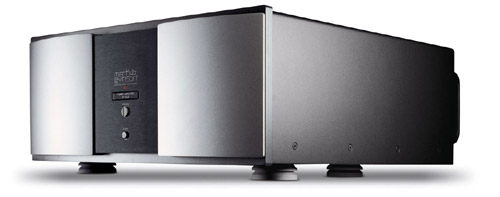
On this blistery, wintry night here in the Northeast, it’s great to settle in at home and warm up with the best prescription against the elements: the blues. And not just any blues either. I’m talking about turning up the volume on the “Master of the Telecaster,” the “IceMan” himself, Albert Collins, recorded live with his Band, the (aptly named) Icebreakers, on their blazing recording Live 92-93[Pointblank Records 40658]. Here is a disc found in a used CD bin, bought for around four bucks and worth far more than its weight in musical joy. Just so happens that I had the newest Mark Levinson amplifier, the No. 433, on hand to see how Albert’s “talking to himself” (his trademark bursts of dialog echoed back in quick guitar lines) would be delivered through this new amplifier. Would all of Albert’s guitar swagger, note splicing and electric brilliance come through on this newest of Levinson’s creations? With its three separate channels ready to drive your front and center channels in a multi-channel system, can the 433 also morph into such a system and deliver the goods on DVD concert footage or the delicate and sultry soundtrack of the latest film from Brazil?
Exquisite Build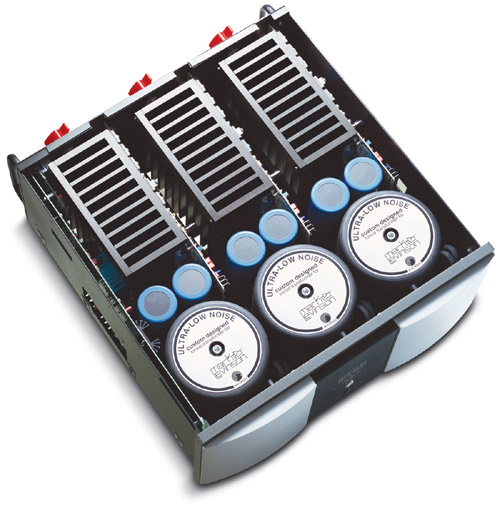 Before we venture into listening to Albert’s great tune, “Frosty,” or into the windswept lagoons of Northern Brazil, let’s take a look at this new sandblasted beauty. It certainly looks like a flagship Levinson product, meticulously packed in those legendary Levinson boxes. External and internal build quality reflects the Levinson tradition for excellence and innovation. The 433 is officially rated at 200 w/ch into 8 ohms and doubles to 400 w/ch at 4 ohms. It features three large power supplies. Each supply includes a high-capacity, low-noise toroidal transformer and two large, low “Equivalent Series Resistance” capacitors. The 433 is designed to have the finesse of a small amp, with power reserves that are dynamic and massive. To accomplish this, the 433 utilizes heavy oxygen-free copper bars to enhance the efficiency of its power distribution. The 433 also utilizes a truly balanced input topology to attack common mode noise and distortion. Signals travel through identical signal circuit paths, with the input signals remaining balanced throughout the voltage gain stages. Although extremely heavy to transport, (the designed rear handles are essential) the 433 does sit nicely on any standard dimension shelf or amp stand that can support its bulk and provide proper ventilation (although excess heat was never an issue).
Before we venture into listening to Albert’s great tune, “Frosty,” or into the windswept lagoons of Northern Brazil, let’s take a look at this new sandblasted beauty. It certainly looks like a flagship Levinson product, meticulously packed in those legendary Levinson boxes. External and internal build quality reflects the Levinson tradition for excellence and innovation. The 433 is officially rated at 200 w/ch into 8 ohms and doubles to 400 w/ch at 4 ohms. It features three large power supplies. Each supply includes a high-capacity, low-noise toroidal transformer and two large, low “Equivalent Series Resistance” capacitors. The 433 is designed to have the finesse of a small amp, with power reserves that are dynamic and massive. To accomplish this, the 433 utilizes heavy oxygen-free copper bars to enhance the efficiency of its power distribution. The 433 also utilizes a truly balanced input topology to attack common mode noise and distortion. Signals travel through identical signal circuit paths, with the input signals remaining balanced throughout the voltage gain stages. Although extremely heavy to transport, (the designed rear handles are essential) the 433 does sit nicely on any standard dimension shelf or amp stand that can support its bulk and provide proper ventilation (although excess heat was never an issue).
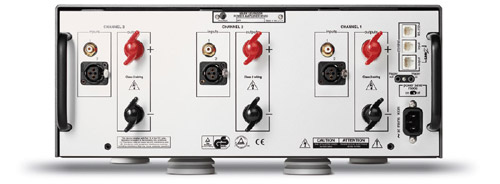
Around back, the 433 provides Levinson custom binding posts for each of its three channels, with three XLR balanced input connectors and three RCA input connectors. Levinson communication ports are also standard, as are mini jacks for remote turn-on. Everything is laid out beautifully with the best materials and ergonomics in mind, as in all Levinson products I have auditioned. Finally, the 433 is a visual treat, quite modern, sleek and agile looking for its bulk and weight, with footers constructed for maximum stability and looking like a metallic, rounded creature ready to pounce …
Jump Factor Galore
… and pounce it does. Directly out of its box (and even more so after 100 hours of break-in time), the 433 showed its power, finesse and extraordinary talents as an excitement machine in my reference two channel system. This amp has what I can only describe as a “jump factor” that Albert Collins would simply love. 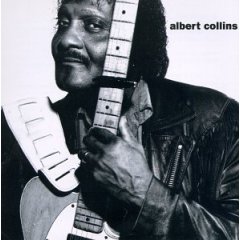 I adore my McIntosh MC 501 monoblock amplifiers for their power, their rolling-into the room generous, natural bass and their richness and soul. Substitute the Levinson 433, however, and several new and exciting things happen right away. First and foremost, there was an immediate expansion of natural spaciousness, air and depth to the soundstage of nearly every recording auditioned. For example, on theAlbert Collins Live disc, the fairly crowded stage (with the Macs in place) was literally transformed by the 433 into a much more spacious and deeper stage, with more natural layers of air and space between the players for better image dimensionality. There was that new sense that one could literally walk around the players and enjoy listening to what each brought to the performance individually. Collins’ “Frosty” was a perfect example, as the 433 took hold of this instrumental and took it to the rollicking bank. On this blazing number, exchanges between groups of musicians are made in furious punches, involving dueling guitars, a muted trumpet, a sprawling tenor sax and underlying them all, a huge bass leading the charge. The 433 took hold of the Ascendo’s woofers and commanded them without any congealment or strain, even at icebreaking volume. Each soloist held a new, defined position on the stage, beautifully cast in natural air and individual space. Excitement ruled supreme, at both low and high volume. Another big plus of the 433: massive delivery of taut bass lines and a “jump factor” in the upper midrange that pulls one into the musical action and does not let go. The treble was another area of brilliance with the 433 driving the action, showcased by the muted trumpet on “Frosty” that was all cool breath and soft metallic tone, benefiting again from being placed farther back in this recording’s layered soundstage. Although a bit less warm and plush than with the MC 501s in place, the 433 brought a new and welcomed delivery of much tauter bass, further dynamic extension up top and that special quality of spaciousness and improved image dimensionality to this rollicking Blues live recording. Getting sweaty with this piece of Levinson gear? Absolutely.
I adore my McIntosh MC 501 monoblock amplifiers for their power, their rolling-into the room generous, natural bass and their richness and soul. Substitute the Levinson 433, however, and several new and exciting things happen right away. First and foremost, there was an immediate expansion of natural spaciousness, air and depth to the soundstage of nearly every recording auditioned. For example, on theAlbert Collins Live disc, the fairly crowded stage (with the Macs in place) was literally transformed by the 433 into a much more spacious and deeper stage, with more natural layers of air and space between the players for better image dimensionality. There was that new sense that one could literally walk around the players and enjoy listening to what each brought to the performance individually. Collins’ “Frosty” was a perfect example, as the 433 took hold of this instrumental and took it to the rollicking bank. On this blazing number, exchanges between groups of musicians are made in furious punches, involving dueling guitars, a muted trumpet, a sprawling tenor sax and underlying them all, a huge bass leading the charge. The 433 took hold of the Ascendo’s woofers and commanded them without any congealment or strain, even at icebreaking volume. Each soloist held a new, defined position on the stage, beautifully cast in natural air and individual space. Excitement ruled supreme, at both low and high volume. Another big plus of the 433: massive delivery of taut bass lines and a “jump factor” in the upper midrange that pulls one into the musical action and does not let go. The treble was another area of brilliance with the 433 driving the action, showcased by the muted trumpet on “Frosty” that was all cool breath and soft metallic tone, benefiting again from being placed farther back in this recording’s layered soundstage. Although a bit less warm and plush than with the MC 501s in place, the 433 brought a new and welcomed delivery of much tauter bass, further dynamic extension up top and that special quality of spaciousness and improved image dimensionality to this rollicking Blues live recording. Getting sweaty with this piece of Levinson gear? Absolutely.
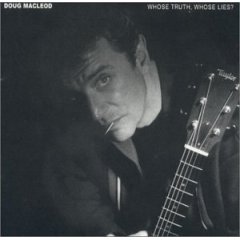 Putting Collins’ “T-Bone Shuffle” aside for a moment, let us check out what the 433 can do with female and male vocalists in smaller, more intimate recording settings. My test here? Doug Macleod in his beautiful piece, “Norfolk County” from Whose Truth, Whose Lies? [Audioquest 1054]. This entire disc is a masterpiece of acoustic blues blowing hot and swinging cool. With the 433 in place, Macleod’s voice was snared beautifully. First, there was a much better feel for how Macleod delivered his vocals, including how he moved in this cut back and forth in distance from his microphone, using that motion to project more deeply or ease back away. Even at low volume, (which is really the truest test) the 433 brought this more “alive” (natural and spacious) feel to the performance, bringing one closer to the illusion of a live performance and closer to feeling “in the moment” of this take on this intimate ballad. I couldn’t help but also enjoy how the 433 infused more depth to the circular brushes played on snare through out the background of this slow brewing number, as the snare was placed in a deeper layer of air and much further back in this intimate soundstage than previously heard. Lastly, many who hear this great cut for the first time are enticed by the female vocalist who appears here almost casually, lending her gorgeous voice to mingle with MacLeod’s. With the 433 in place, the projection of this female voice literally jumped from my speakers, trailing away in airy, glare free beauty, like a rush of running, clear water. Again there was less of the natural warmth and “plushness” that the MC 501 amps tend to provide to recordings of female vocalists, but the 433’s delivery of such sweet, extended treble was just as compelling and deeply involving.
Putting Collins’ “T-Bone Shuffle” aside for a moment, let us check out what the 433 can do with female and male vocalists in smaller, more intimate recording settings. My test here? Doug Macleod in his beautiful piece, “Norfolk County” from Whose Truth, Whose Lies? [Audioquest 1054]. This entire disc is a masterpiece of acoustic blues blowing hot and swinging cool. With the 433 in place, Macleod’s voice was snared beautifully. First, there was a much better feel for how Macleod delivered his vocals, including how he moved in this cut back and forth in distance from his microphone, using that motion to project more deeply or ease back away. Even at low volume, (which is really the truest test) the 433 brought this more “alive” (natural and spacious) feel to the performance, bringing one closer to the illusion of a live performance and closer to feeling “in the moment” of this take on this intimate ballad. I couldn’t help but also enjoy how the 433 infused more depth to the circular brushes played on snare through out the background of this slow brewing number, as the snare was placed in a deeper layer of air and much further back in this intimate soundstage than previously heard. Lastly, many who hear this great cut for the first time are enticed by the female vocalist who appears here almost casually, lending her gorgeous voice to mingle with MacLeod’s. With the 433 in place, the projection of this female voice literally jumped from my speakers, trailing away in airy, glare free beauty, like a rush of running, clear water. Again there was less of the natural warmth and “plushness” that the MC 501 amps tend to provide to recordings of female vocalists, but the 433’s delivery of such sweet, extended treble was just as compelling and deeply involving.
The 433 also drove other intimate live female performances, like those found on Rickie Lee Jones’ Naked Songs [Reprise 45950] and Patty Larkin’s dynamic A Go-Go [Vanguard 79547] with the same sophisticated mix of spaciousness, taut bass and neutral, involving finesse up top. On Rickie Lee’s “Last Chance Texaco,” the 433 brought such a new dimension of natural space to the proceedings that I was literally hearing this cut for the first time. At the end of this deeply stirring ballad, Rickie Lee moves in to her microphone and then recedes, repeating this pattern on a high, trailing treble note, as a retreating car siren might be heard. With its exceptional delineation of stage expanse, space and the recording venue, this moment was captured brilliantly by the 433 in place. 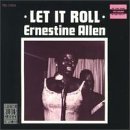 Finally, don’t go anywhere until you have heard the great Ernestine Allen do her signature number, “Let It Roll,” from Let It Roll [Tru-Sound 15004]. Here, Allen’s swinging and creative alto is heard in joyous tandem with the great King Curtis on tenor sax. The 433 just drives this number home like I never heard it before. Rudy Van Gelder’s flair for capturing the studio space in all its glory and excitement was perfectly rendered by the 433, especially in offering that quality of spaciousness between Allen and her playful duels with Curtis, back and forth in a much wider, deeper soundstage than ever heard before. The 433 also infused a great bass groove chugging along in low, taut tones beneath Allen’s brilliant vocal improvisations and scatting up top.
Finally, don’t go anywhere until you have heard the great Ernestine Allen do her signature number, “Let It Roll,” from Let It Roll [Tru-Sound 15004]. Here, Allen’s swinging and creative alto is heard in joyous tandem with the great King Curtis on tenor sax. The 433 just drives this number home like I never heard it before. Rudy Van Gelder’s flair for capturing the studio space in all its glory and excitement was perfectly rendered by the 433, especially in offering that quality of spaciousness between Allen and her playful duels with Curtis, back and forth in a much wider, deeper soundstage than ever heard before. The 433 also infused a great bass groove chugging along in low, taut tones beneath Allen’s brilliant vocal improvisations and scatting up top.
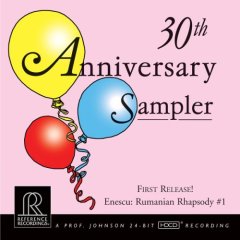 Finally, can’t go to bed without mentioning the 433 driving big, orchestral recordings, like my newest favorite collection on Reference Recordings, their30th Anniversary Sampler [RR 908], which is chock full of dynamic, orchestral wonders. The very first selection, the short, boisterous “La Marisque” played by the University of Texas Wind Ensemble was delivered with great dynamic force by the 433. Those bells and triangles that sparkle and reverberate through out this piece were placed far back in a newly expansive soundstage, offering much more layered depth than before with the MC 501’s in place. Enescu’s “Romanian Rhapsody #1” also filled my room with glorious string tone, cascading and dancing in new layers of cushioned air surrounding a much more expansive presentation. The resolution provided by the 433 was astonishing, both in terms of individual instrument color and placement (i.e. solo flute naturally sitting beside other woodwind players) as well as providing a greater sense of the recording venue, all offered up for enjoyment by this outstanding and eclectic recording.
Finally, can’t go to bed without mentioning the 433 driving big, orchestral recordings, like my newest favorite collection on Reference Recordings, their30th Anniversary Sampler [RR 908], which is chock full of dynamic, orchestral wonders. The very first selection, the short, boisterous “La Marisque” played by the University of Texas Wind Ensemble was delivered with great dynamic force by the 433. Those bells and triangles that sparkle and reverberate through out this piece were placed far back in a newly expansive soundstage, offering much more layered depth than before with the MC 501’s in place. Enescu’s “Romanian Rhapsody #1” also filled my room with glorious string tone, cascading and dancing in new layers of cushioned air surrounding a much more expansive presentation. The resolution provided by the 433 was astonishing, both in terms of individual instrument color and placement (i.e. solo flute naturally sitting beside other woodwind players) as well as providing a greater sense of the recording venue, all offered up for enjoyment by this outstanding and eclectic recording.
Coup De Grace
Levinson’s foray into multi channel applications with the 433, (by providing three separate channels to drive one’s front and center speakers), is the coup de grace that warms my heart to no end with this new amplifier. Other reviewers will disagree, but for me, multi channel sound, (including DVD video concert footage and enjoying film soundtracks), is a medium to be explored to the fullest. For example, I never was fortunate enough to see Cream play live. With the 433 driving my Talon Khite fronts, and an older Anthem amp driving four Khites in the rear, I literally was plunged into the riveting performance of Cream, Live At Royal Albert Hall[Rhino DVD 970421]. All of the great attributes of the 433 in two channel were present in spades in multi channel: a greater spaciousness to the presentation; more natural layers of depth between the three musicians on stage; wonderful pristine vocals and taut bass, even at low volume. When Clapton runs his solo to full bore on “Badge”, all of the instantaneous power of this soaring momentum is captured beautifully by the 433 without any glare or congestion. The amazing spaciousness provided by the 433 seemed to provide increased resolution and naturalness to the vocals of all three players, and lent the subterranean bass of Jack Bruce even more vibrant and deep. Ginger Baker’s drum kit was also set much further back in the stage than previously heard, and the 433’s transient powers to stop on a dime created a more natural projection and vibrancy to his kick drum, a hard task indeed for any amplifier. The 433’s special way with image dimensionality, definition of recording venue and creation of a natural spaciousness really took off in this multi channel environment, enveloping and bringing the listener further into the cauldron of this molten, live performance where each musician’s individual artistry could be enjoyed more fully.
Let’s turn finally from electric blues to the hot, sandy lagoons of northern Brazil, where all of the generational dramatic action unfolds in the compelling film, House of Sand [Sony Pictures DVD 2006]. One of the most beautiful things about this movie is its soundtrack. The entire movie is encased in the sounds of the natural world of this remote and hostile region. Winds blow constantly; desert insect calls are heard at night; sand storms whirl and recede; human voices project and then fade away in the great expanse of the desert. With the 433 in place, this delicate and at times boisterous soundtrack of nature was delivered to a degree I had never heard before. Everything was crystal clear: dialog against winds; sand blowing in to fill a wooden structure; deep howls of winds in a great expanse of night desert sky. The 433 allowed me to appreciate anew the beauty, sophistication and vitality of such wondrous soundtracks to help tell the story of our favorite films.
Taking It Home
At its price of $10,000, the 433 is an expensive piece, but combining its two-channel and multi-channel virtues and applications is another coup for Levinson. I think the 433 is the best yet from this venerable company and sits at the pinnacle of what I think an amplifier should accomplish. It brought me hours of joy, involvement in music, and multi-channel delights. It pushed the boundaries of both my two-channel reference system and multi-channel rig to heights I had not heard before, particularly in the areas of increased spatial dimensions and depth; image dimensionality of individual instruments and voices; unveiling of the recording venue and sheer, transient power and excitement. This amp has, in the words of the great Albert Collins, a “black cat bone” that will follow you all the way back home and keep you there, under its magnificent spell.
Nelson Brill
____________________
Specifications: Mark Levinson No. 433 Specifications
Power Output: 200 watts @8 Ohms, 400 watts @4 Ohms
Frequency Response: within 0.2 db from 20Hz to 20kHz
Signal to Noise Ratio: better than -80dB (ref. 2.83V)
Input Impedance: 100k (balanced); 50k (unbalanced)
Voltage Gain: 26.8dB
Power Consumption: 200W when on; 100W in standby; 10W in sleep
Input Sensitivity: 2.83V output; 130 mV; Full output: 1.82V
Dimensions: 17.5(w) x 7.65(h) x 19.83(d) in.
Weight: Shipping: 130.5 lbs. Net: 114.5 lbs.
Price: $10,000
Company Information
Mark Levinson
3 Oak Park
Bedford, MA. 01730
Tel: (781)-280-0300
Website: www.marklevinson.com
![]()
Don’t forget to bookmark us! (CTRL-SHFT-D)
Stereo Times Masthead
Publisher/Founder
Clement Perry
Editor
Dave Thomas
Senior Editors
Frank Alles, Mike Girardi, Key Kim, Russell Lichter, Terry London, Moreno Mitchell, Paul Szabady, Bill Wells, Mike Wright, Stephen Yan, and Rob Dockery
Current Contributors
David Abramson, Tim Barrall, Dave Allison, Ron Cook, Lewis Dardick, Dan Secula, Don Shaulis, Greg Simmons, Eric Teh, Greg Voth, Richard Willie, Ed Van Winkle, and Rob Dockery
Music Reviewers:
Carlos Sanchez, John Jonczyk, John Sprung and Russell Lichter
Site Management Clement Perry
Ad Designer: Martin Perry





Be the first to comment on: MARK LEVINSON No. 433 TRIPLE MONAURAL AMPLIFIER